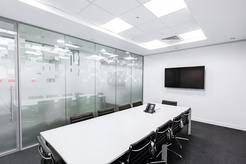 With the popularity of LED lighting on the rise, many building owners are looking for additional ways to save on energy costs. Adding lighting controls to a workplace increases energy efficiency and provides added peace of mind. According to the US Department of Energy, new codes require lighting controls as part of their new energy reduction programs. Let’s take a look at a few different sensors and how they work. MOTION & OCCUPANCY Motion sensors and occupancy sensors act in a comparable manner. They detect the presence of a person in the space and automatically turn the lights on using infrared waves, ultrasonic waves, microwaves or other technology. Motion and occupancy sensors also turn the lights off when no motion is detected – saving substantial amounts of energy. These sensors are great for common areas, hallways and offices. VACANCY Vacancy sensors operate similarly to motion and occupancy sensors. The only difference between the two types is with vacancy sensors the wall switch must be turned on manually when entering the room. After the switch has been turned on, the space is then monitored and turns off automatically when no motion has been detected for a set amount of time – making them ideal for storage rooms or single-occupant offices. PASSIVE INFRARED PIR, or Passive Infrared, sensors are best utilized for detecting major movement, such as an occupant walking through the space. The sensor detects movement of heat sources by measuring infrared radiation. Since this type of technology only detects motion in its direct view, it is not ideal for rooms with sectioned off areas like bathrooms with stalls or offices with cubicles. They are best placed in small, enclosed office spaces and conference rooms. ULTRASONIC Ultrasonic sensors are excellent for detecting minor motion in a space – such as an employee typing on their desktop keyboard. These use a similar technology to radar, working on the Doppler Shift Principle. Ultrasonic sensors will send high frequency sound waves into an area and will check for their reflected patterns. If the reflected pattern is continuously changing, it’s assumed that there are occupants and the lights will turn on and stay on. With the help of this principle, these sensors can also “see” around corners! Use ultrasonic sensors in bathrooms with multiple stalls and stairwells. DUAL-TECHNOLOGY Dual-Technology sensors combine the mechanics of both Ultrasonic and PIR sensors. They will not turn on until both technologies are triggered, allowing for less “false alarms”. Once the light is turned on, only one component needs to be engaged to keep the lights on. Dual technology options are preferred in office spaces with cubicles due to obstructions like partitions, furniture and filing cabinets. DAYLIGHT HARVESTING Daylight Harvesting sensors are designed to maintain a minimum recommended light level, using natural daylight to compensate for the difference of light needed. Preferred light levels will differ based on the needs of the space depending on the amount of natural light in the area. These sensors use a photocell to detect light levels which are then interpreted by a lighting control module. The lights will be turned off or dimmed to meet the preferred lighting levels. If the lights are not dimmable, they will remain on until the natural daylight can meet the required light level for the space. Use these sensors in an area with multiple large windows or skylights that help to illuminate the room. Choosing the right sensors for your application can be tricky. Contact our knowledgeable Customer Service team with any questions you may have. Our representatives will help you find the right sensor for your application. Contact us here or leave a comment below.
0 Comments
Your comment will be posted after it is approved.
Leave a Reply. |
This blog's content is copyright © 2014-19 Lighting Supply.
